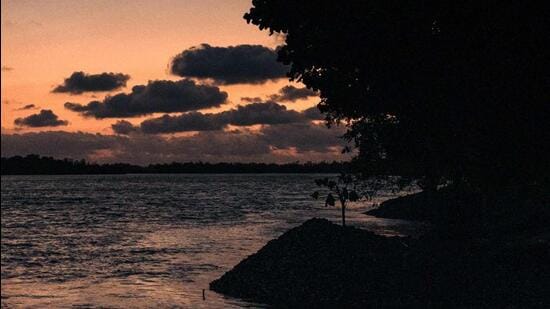Sunderbans losing dense mangrove cover, reveals key government report
It comes as a concern because the mangrove cover acts a barrier against cyclones while protecting Bengal’s capital city of Kolkata from directly bearing the brunt of storms that originate in the Bay of Bengal
KOLKATA: The Sunderbans, which is the world’s largest mangrove delta and home to the Royal Bengal Tiger, is gradually losing its very dense mangrove cover, data released by the Forest Survey of India (FSI) on Thursday revealed.

Experts said rising salinity levels and the increasing number of cyclones in recent times are together taking a toll on the mangrove forest.
It comes as a concern because the mangrove cover acts a barrier against cyclones while protecting West Bengal’s capital city of Kolkata from directly bearing the brunt of storms that originate in the Bay of Bengal.
The State of Forest Report 2021 revealed that the very dense mangrove cover in the Sunderbans shrank by two square kilometres – from 996 sq km to 994 sq km - between 2019 and 2021. The delta had a dense mangrove cover of 999 sq km in 2017, which declined by 3 sq km in 2019.
“We have to check exactly where the very dense forest cover has gone down. Progressive salinisation is one of the reasons behind the decline in the mangroves’ density. Also, the very severe cyclone Amphan, which hit the delta in 2020, has definitely taken a toll,” said Debal Roy, chief wildlife warden of West Bengal.
The southern Bengal delta was hit by two very severe cyclones – Amphan in May 2020 and Yaas in May 2021 – which took a toll on the vegetation. Nearly one-third of the delta was severely damaged during Amphan.
The FSI’s report also says that the total mangrove cover, which includes very dense mangrove, moderately dense mangrove and open mangrove, increased from 2,112 sq km to 2,114 sq km in 2021. But this rise has been driven only by an increase in the open mangrove cover, which primarily includes plantation.
The moderately dense mangrove cover remained unchanged during the last couple of years.
“The rising salinity level in the delta is taking a toll on several mangrove species such as Sonneratia apetala, Nypa fruticans and Bruguiera gymnorhiza, among others,” said Abhijit Mitra, former head of the marine science department at Calcutta University. “Their growth is becoming stunted as they can’t withstand salinity above 20 psu (practical salinity unit). The average salinity of sea water in Bay of Bengal is 33 psu, which is equal to 33 grams of salt in one litre of water. Due to reduced sweet water flow and intrusion of salt water from the sea, these trees are either dying or suffering from stunted growth.”
Also Read: Around 8,000 trees to be axed for construction of Greenfield Shamli-Ambala highway
The Sunderbans forest sprawls over 10,000 sq km covering India and neighbouring Bangladesh, of which 40% lies in India and is home to many rare and threatened wildlife species such as the Royal Bengal Tiger and the estuarine crocodile.
In India, it is confined to the southern tip of West Bengal and spreads over two districts – South 24 Parganas and North 24 Parganas.
Experts say the Sunderbans have been shrinking over the past few years and warn that if the trend continues, it could have a disastrous impact on Kolkata as well as on the livelihood of villagers in and around the delta.
The very dense mangrove, which acts as the barrier against cyclones and storms, shrank from 1,038 sq km in 2011 to 999 sq km in 2017. In the last four years, it dropped further to 994 sq km.
“The Sunderbans’ thick mangrove acts as a bio-shield and saves Kolkata from the direct onslaught of cyclones that originate in the Bay of Bengal. The mangrove also acts as spawning ground for several fish and other aquatic animals such as crabs and prawns on which the locals depend for their livelihood,” Tuhin Ghosh, director of School of Oceanographic Studies in Jadavpur University, had said in an earlier interview.
Amphan hit the Sunderban on May 20, 2020 with a wind speed of up to 185kmph. By the time it crossed the mangroves and reached Kolkata, its wind speed was came down to around 130kmph.
The state government planted around 50 million mangrove saplings after southern Bengal took a hit from Amphan. In May 2021, after cyclone Yaas struck the state, chief minister Mamata Banerjee said another 150 million saplings would be planted in Bengal’s three coastal districts.
In India, West Bengal has the largest mangrove cover, followed by Gujarat, and the Andaman and Nicobar Islands.




